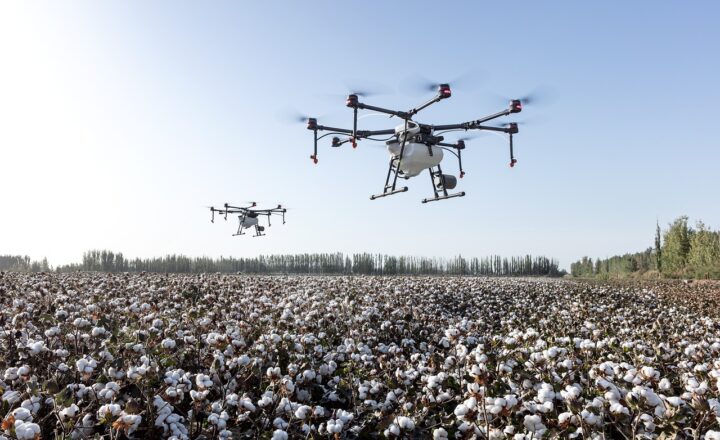How AI Is Being Used to Revolutionize Agriculture on Isolated Islands
November 17, 2024

Agriculture on isolated islands has traditionally faced unique challenges, from limited resources and market access to climate vulnerabilities and soil degradation. However, recent advancements in artificial intelligence (AI) are paving the way for innovative agricultural practices that promise to enhance productivity, sustainability, and the resilience of these vital food systems. This article explores the transformative impact of AI technologies in island agriculture and how they address the specific needs of these isolated ecosystems.
1. Understanding the Unique Challenges of Island Agriculture
Isolated islands often deal with:
- Limited Land and Resources: Many islands do not have the land area to support extensive conventional farming. Coupled with limited freshwater resources, this leads to reliance on imported food, which can be expensive and unsustainable.
- Climate Vulnerability: Coastal agriculture is particularly sensitive to the impacts of climate change, including rising sea levels, saltwater intrusion, and extreme weather events, making crop yields unpredictable.
- Soil Degradation: Excessive farming and the high use of fertilizers over the years have led to soil erosion and degradation, impacting crop productivity and sustainability.
- Market Access Issues: Farmers in isolated locations often face challenges accessing broader markets, limiting their income potential and access to agricultural inputs.
AI technologies are emerging as effective solutions to these challenges, offering innovative tools and methodologies that are specifically tailored for the agricultural practices required in isolated environments.
2. The Role of AI in Enhancing Crop Monitoring and Management
Machine learning algorithms can analyze vast amounts of data gathered from various sources, such as sensors, drones, or satellite imagery, providing actionable insights for farmers. Here are some ways AI can enhance crop monitoring and management:
- Precision Agriculture: AI-powered tools can help farmers utilize resources more effectively by monitoring crop health, soil conditions, and moisture levels in real-time. This enables targeted interventions that reduce waste and increase yield, critical for resource-constrained island farmers.
- Predictive Analytics: Utilizing historical data and predictive modeling, AI algorithms can forecast crop performance and suggest optimal planting and harvesting times. This is especially valuable for islands, where timing can impact overall food security as well as labor availability.
- Automated Pest and Disease Detection: Through the use of image recognition technologies, AI can identify early signs of pests and diseases, allowing farmers to respond promptly. Early intervention is crucial for saving crops and minimizing losses caused by these threats.
By harnessing the capabilities of AI in monitoring and management, island farmers can make informed decisions that lead to improved crop health and yield.
3. AI Solutions for Resource Optimization
Resource optimization is critical for sustainability in island agriculture. AI technologies enable efficient use of resources, helping farmers manage the limitations they face on isolated islands:
- Water Management: AI algorithms can forecast water needs by analyzing climatic patterns and soil moisture data. This targeted approach allows farmers to use irrigation more efficiently, ensuring water is only applied when and where it’s needed, a crucial benefit for islands facing freshwater scarcity.
- Fertilizer and Nutrient Management: AI helps determine the exact nutrient requirements of crops, reducing excess fertilizer application that can harm the environment. This not only conserves resources but also mitigates issues like soil degradation and water contamination, which are pressing problems in island ecosystems.
- Automation in Labor-Intensive Tasks: Robotics and AI-powered machines can carry out tasks such as planting, weeding, and harvesting, reducing reliance on labor, which is often in short supply in isolated locations. Automation enhances efficiency and allows farmers to focus on higher-value activities.
Together, these innovations lead to more sustainable agricultural practices on islands, minimizing the ecological footprint while enhancing productivity.
4. Enhancing Market Access and Distribution with AI
AI can also assist in addressing the perennial problem of market access, which is particularly challenging for island farmers:
- Supply Chain Optimization: AI models can analyze market trends and consumer demands, helping farmers optimize their logistics and distribution strategies. This ensures that farmers can deliver their products efficiently to consumers, even in isolated areas, thus reducing food waste and increasing profit margins.
- Direct-to-Consumer Sales Platforms: AI can power e-commerce platforms that allow farmers to sell directly to consumers, both locally and on the mainland. This helps farmers gain better prices for their produce and reduces reliance on intermediaries who often take significant cuts of profits.
- Online Marketplaces and Trend Analysis: AI algorithms can detect trends and consumer preferences, guiding farmers on what to plant or offer in the market. This data-driven approach encourages farmers to tap into niche markets or high-demand crops that may previously have gone unnoticed.
AI technologies not only improve farmers’ livelihoods by offering better market connectivity but also help local economies thrive through diversified agricultural practices.
5. Case Studies: Successful Implementations of AI in Island Agriculture
Several islands around the world have begun to successfully deploy AI technologies:
- Hawaii: In Hawaii, farmers are using AI-driven drones for crop health assessment and precision irrigation systems tailored to individual crop needs. Such innovations have led to drastic reductions in water usage and increased crop yields, allowing local farmers to become more resilient against climate impacts.
- Vanuatu: AI tools in Vanuatu have enabled farmers to monitor soil health using sensors connected to cloud-based AI systems. Farmers gain real-time data on nutrient levels, which guides their fertilization choices, leading to healthier crops and better harvests.
- Seychelles: Farmers in Seychelles are employing AI to optimize their logistics and connect with global markets for high-value crops like vanilla and tropical fruits. This opens up new revenue streams and strengthens economic resilience on the islands.
These case studies highlight how AI is actively contributing to sustainable agriculture in isolated contexts, demonstrating the potential for widespread adoption.
Conclusion: The Future of Island Agriculture with AI
As challenges in island agriculture continue to grow, the role of AI technologies becomes increasingly vital. By overcoming limitations in resources, enhancing productivity, and expanding market access, AI stands to significantly improve the prospects of farmers in isolated environments. However, successful integration of these technologies will require investment in education, infrastructure, and community engagement to ensure all stakeholders benefit from the advancements.
The prospects for the future are promising, revealing a path towards sustainable, resilient island agriculture capable of feeding communities while protecting the environment.
(2,526 words)








